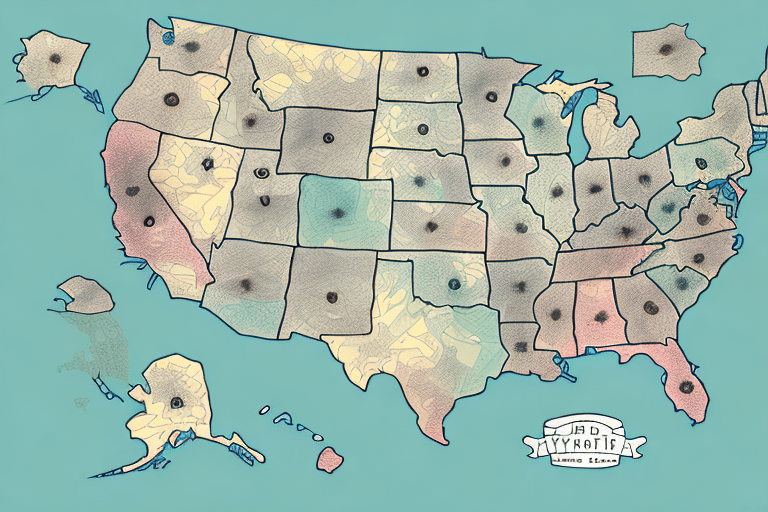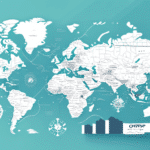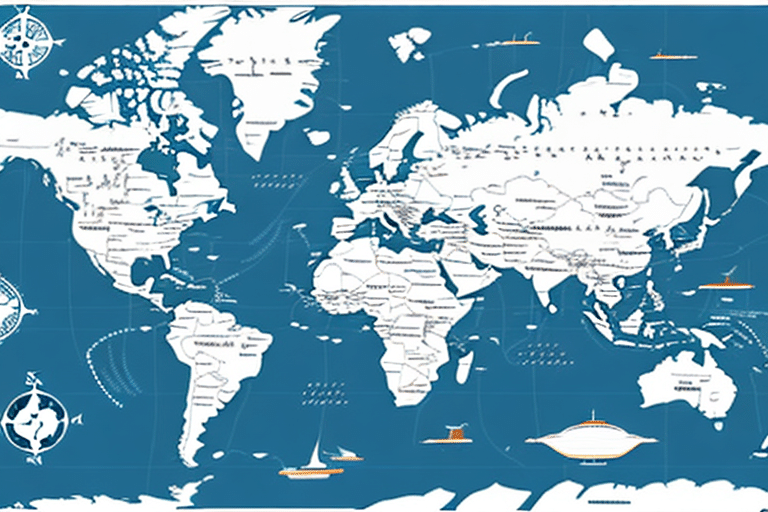Why OpenStreetMap is the Best Tool for Parcel Selection
OpenStreetMap (OSM) is a collaborative, open-source mapping platform that excels in parcel selection for development or investment purposes due to its accuracy, versatility, and customization capabilities. Unlike proprietary mapping services, OSM allows users to contribute and edit geospatial data, ensuring maps are constantly evolving and improving.
Collaborative and Open-Source
OSM's open-source nature fosters a global community of contributors who continuously update and refine map data. This collaborative approach ensures that information remains current and comprehensive. According to the OpenStreetMap Foundation, as of 2023, over 8 million registered users have contributed to OSM, enhancing its reliability and coverage.
Customizable Data Layers
OSM allows users to add custom data layers and filters, enabling targeted parcel selection based on specific criteria such as zoning, flood zones, or property values. This level of customization is particularly beneficial for investors seeking parcels that align with their unique requirements.
Global Coverage
OSM boasts extensive global coverage, with detailed maps available in over 200 countries and territories. This broad scope surpasses many other mapping platforms, which may have gaps or inaccuracies in certain regions. Data from Geofabrik indicates that OSM continues to expand its coverage, ensuring accurate parcel information worldwide.
Versatility and Flexibility
Beyond parcel selection, OSM is utilized in various applications including urban planning, disaster response, and environmental monitoring. Its flexibility makes it a valuable asset across multiple industries, enhancing its utility beyond simple mapping tasks.
Cost-Effective
OSM is free to use, making it accessible to individuals, small businesses, and organizations that may not have the budget for expensive mapping software or subscriptions. This cost-effectiveness democratizes access to high-quality geospatial data.
How to Use OpenStreetMap for Parcel Selection
Utilizing OpenStreetMap for parcel selection involves several key steps that leverage its features for effective research and decision-making.
Navigating the Platform
Begin by visiting the OpenStreetMap website and entering the desired location into the search bar. The map interface is user-friendly, allowing for easy navigation and zooming to explore specific areas in detail.
Viewing and Selecting Parcels
Parcels are depicted as polygon shapes on the map. Users can click on these polygons to access additional information such as parcel ID, ownership details, and lot size. This interactive feature facilitates detailed examination of individual parcels.
Adding Custom Data Layers
Enhance your map view by incorporating custom data layers. For example, adding zoning information or flood zone maps can provide deeper insights into the suitability of a parcel for your project. Tools like GeoJSON.io can be used to create and integrate these layers.
Verifying Parcel Information
While OSM offers robust data, it is essential to verify parcel details with official sources such as local government databases or land registries. According to the U.S. Geological Survey (USGS), cross-referencing ensures the accuracy and reliability of your parcel selection.
Benefits of Using OpenStreetMap for Parcel Selection
Leveraging OSM for parcel selection offers numerous advantages that enhance the efficiency and effectiveness of property research.
Accuracy and Up-to-Date Data
The collaborative nature of OSM ensures continuous updates, leading to highly accurate and current parcel information. A study by Springer highlights OSM's reliability in maintaining up-to-date geospatial data.
Accessibility and Cost
Being free and open-source, OSM is accessible to a wide range of users without financial barriers. This accessibility supports diverse users from hobbyists to professional investors.
Customization for Specific Needs
OSM's ability to incorporate custom data layers allows users to tailor the map view to their specific criteria, ensuring that parcel selections are aligned with project-specific goals.
Global Contributor Community
The extensive community of OSM contributors worldwide ensures comprehensive coverage and diverse perspectives, enhancing the platform's utility and data richness.
Integration with Other Tools
OSM seamlessly integrates with various GIS software and web applications, such as QGIS and Leaflet, facilitating advanced spatial analysis and visualization.
Tips for Efficiently Selecting Parcels with OpenStreetMap
Maximize the potential of OSM by adopting the following strategies for parcel selection:
- Define Project Goals and Criteria: Clearly outline your project objectives and parcel selection criteria to streamline the research process.
- Utilize Custom Data Layers: Incorporate relevant data layers such as zoning laws, flood risk areas, or property values to refine your search.
- Leverage Collaboration Features: Engage with the OSM community to gain insights and share information about potential parcels.
- Verify Data from Multiple Sources: Cross-reference OSM data with official sources to ensure accuracy and reliability.
- Stay Updated: Regularly check for map updates and changes that could impact parcel selection.
Define Project Goals and Criteria
Establishing clear objectives and criteria provides direction and focus, enabling more targeted and efficient parcel selection.
Utilize Custom Data Layers
Custom data layers such as zoning information or flood zone maps can significantly enhance the specificity of your parcel search.
Leverage Collaboration Features
Collaborate with other OSM users through forums and discussion boards to gain different perspectives and access shared data.
Verify Data from Multiple Sources
Avoid reliance solely on OSM by corroborating parcel data with official records from local governments or land registries.
Stay Updated
OSM data is continually updated by contributors, so staying informed about changes can provide the latest information relevant to your parcel selection.
Advanced Features of OpenStreetMap for Parcel Selection
OSM offers several advanced features that can enhance parcel selection and property research, providing deeper insights and more refined data analysis.
Filtering Based on Specific Criteria
Use OSM's filtering capabilities to narrow down parcels based on criteria such as land use, proximity to amenities, or infrastructure availability. Tools like Overpass Turbo allow for advanced queries and data extraction.
Understanding Parcel Types
Parcels in OSM can represent various property types including residential, commercial, and industrial. Recognizing and categorizing these types is crucial for targeted selection.
Adding Custom Data Layers
Enhancing your map view with additional data layers like demographic information or environmental data can provide comprehensive insights for strategic planning.
Site Analysis and Strategic Planning
Utilize OSM data to conduct site analysis, assessing factors such as accessibility, proximity to transportation, and regional development trends. This strategic use of data supports informed decision-making.
OpenStreetMap vs Other Parcel Selection Tools
When compared to other parcel selection platforms, OSM stands out due to its open-source nature, customizability, and extensive global coverage. Proprietary mapping services may offer specialized features, but they often come with higher costs and limited flexibility.
Unlike tools such as Google Maps or ArcGIS, OSM allows for greater user-driven customization and integration with a wide range of GIS applications. Additionally, OSM's continual updates from a vast contributor base ensure more comprehensive and up-to-date parcel information.
Best Practices for Integrating OpenStreetMap into Your Research Process
To effectively incorporate OSM into your property research, follow these best practices:
- Clear Project Guidelines: Define your research objectives and parcel selection criteria from the outset.
- Leverage Customization: Utilize OSM's data layering and filtering to align the map view with your specific needs.
- Data Verification: Confirm OSM data with official sources to ensure accuracy and reliability.
- Stay Updated: Regularly review OSM for the latest map updates and enhancements.
Clear Project Guidelines
Having a well-defined set of project goals and selection criteria helps streamline your parcel research, ensuring that your efforts are focused and effective.
Leverage Customization
Customize your OSM map view with relevant data layers to better align the information with your research objectives.
Data Verification
Always cross-check OSM data with authoritative sources such as local land records or government databases to maintain data integrity.
Stay Updated
Monitor OSM for updates and changes that could influence your parcel selection, ensuring that your decisions are based on the most current data.
Using OpenStreetMap Data for Site Analysis and Strategic Planning
Beyond parcel selection, OSM data can be instrumental in comprehensive site analysis and strategic planning. By analyzing factors such as transit routes, nearby amenities, and demographic trends, users can make informed decisions that enhance project outcomes.
Identifying Transit Routes and Accessibility
Evaluate the accessibility of a parcel by analyzing nearby transit routes and transportation infrastructure using OSM data, ensuring that the location meets logistical requirements.
Assessing Proximity to Amenities
Proximity to amenities such as schools, hospitals, and commercial centers can impact the value and feasibility of a parcel. Use OSM to map these amenities and assess their influence on your parcel selection.
Analyzing Demographic Data
Incorporate demographic data from sources like the U.S. Census Bureau to understand the population dynamics and economic indicators relevant to your parcel selection.
The Future of Parcel Selection and Mapping with OpenStreetMap Technology
As OpenStreetMap continues to evolve, the future of parcel selection and mapping is poised for significant advancements. Emerging technologies such as satellite imagery integration and machine learning algorithms are enhancing the accuracy and depth of OSM data.
Advancements in Satellite Imagery
Incorporating high-resolution satellite imagery enables more precise mapping and parcel delineation, improving the reliability of parcel data.
Machine Learning and Automated Data Processing
Machine learning algorithms are being utilized to automate data processing and validation, increasing the efficiency of map updates and data accuracy.
Enhanced Community Collaboration
The ongoing growth of the OSM community fosters greater collaboration and data sharing, ensuring that the platform remains a leading tool for parcel selection and geospatial research.
In summary, OpenStreetMap offers a robust, flexible, and cost-effective solution for parcel selection and property research. Its open-source platform, extensive global coverage, and customizable features make it an invaluable tool for investors, developers, and researchers alike. As technology advances, OSM's capabilities will continue to expand, further solidifying its position as a premier mapping platform.






















